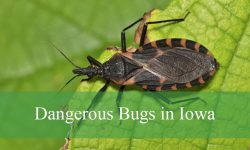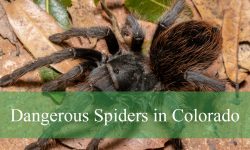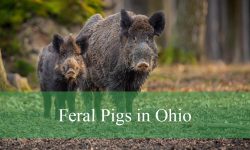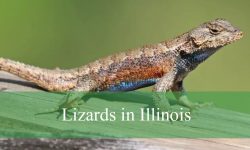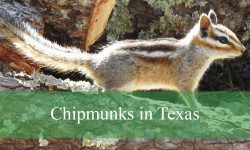Squirrels in Iowa are a familiar and fascinating part of the state’s wildlife. They can be seen darting across roads, leaping between tree branches, or foraging for food beneath backyard feeders. With their playful energy and diverse appearances, squirrels are among the most easily recognized mammals in both rural and urban parts of Iowa.
From the bushy-tailed Fox Squirrel to the secretive Southern Flying Squirrel, the variety of squirrels in Iowa is more impressive than many realize. Each species has unique features, behaviors, and preferred habitats that make them stand out once properly observed. Understanding these differences adds depth to any outdoor experience in the Hawkeye State.
This article highlights five of the most common squirrels in Iowa, offering detailed identification tips, behavior insights, and habitat details. These profiles are perfect for anyone interested in wildlife, nature walks, or simply learning more about the small mammals that share Iowa’s fields, forests, and neighborhoods.
Types of Squirrels in Iowa
Eastern Gray Squirrel (Sciurus carolinensis)
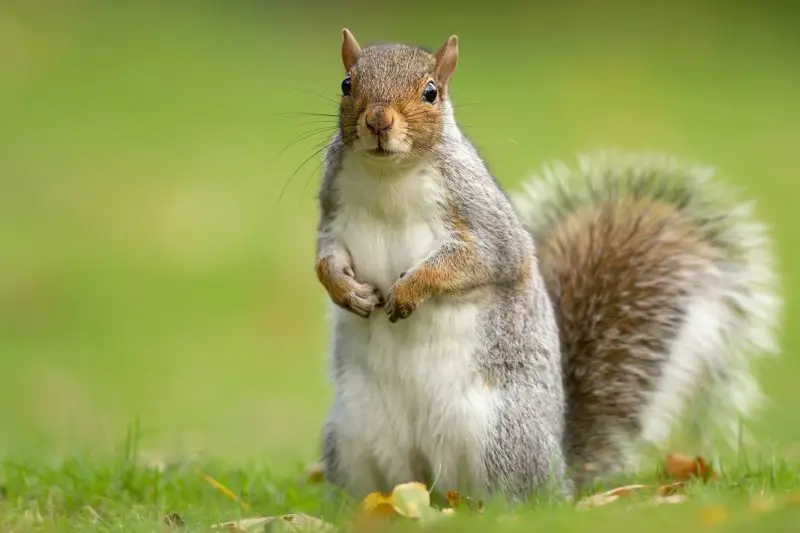
The Eastern Gray Squirrel is one of the most familiar and frequently observed squirrels in Iowa, especially in urban and suburban areas. This species has a sleek, medium-sized body typically measuring between 16 to 20 inches in total length, including its long, bushy tail. Their fur is generally gray with subtle brown tones on the back, and they often have white or pale gray undersides. The bushy tail helps them balance while leaping between branches and serves as a shield against cold weather.
These squirrels are agile climbers and spend most of their time in trees, but they will readily come down to forage on the ground. They are active during the day and communicate using a series of sharp chirps, tail flicks, and barks. Eastern Gray Squirrels are intelligent animals known to remember the locations of hundreds of buried nuts, which helps them survive through Iowa’s harsh winters. During breeding season, males chase females in vigorous displays of agility and speed.
Their diet includes acorns, walnuts, hickory nuts, seeds, berries, mushrooms, and occasionally bird eggs or insects. They are notorious for raiding backyard bird feeders and are particularly fond of sunflower seeds and corn. Gray squirrels are scatter hoarders, meaning they bury individual food items in multiple locations, a behavior that unintentionally assists in seed dispersal and forest regeneration.
In Iowa, Eastern Gray Squirrels are commonly found in wooded city parks, residential areas with large trees, and rural woodlots. They are especially prevalent in oak-hickory forests. A fun fact about them is that some individuals can exhibit melanism, which results in an entirely black coat—black-phase gray squirrels are seen in parts of Iowa, especially around cities like Iowa City and Cedar Rapids.
Fox Squirrel (Sciurus niger)
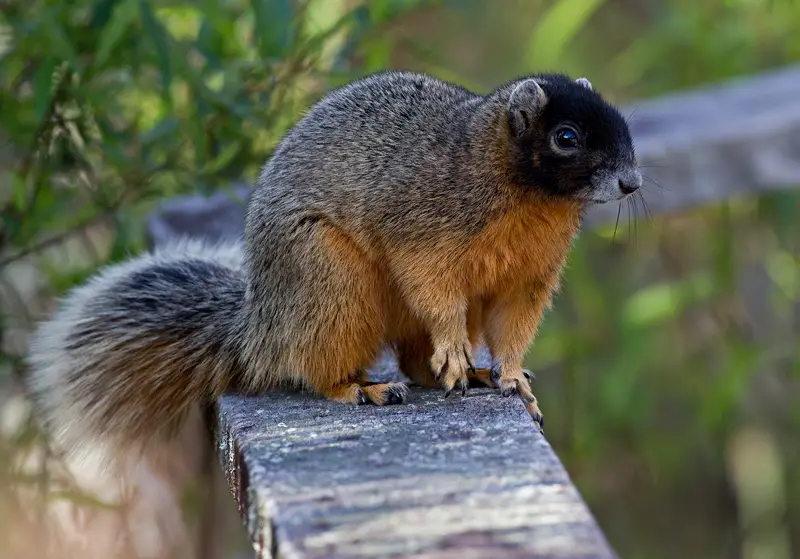
The Fox Squirrel is Iowa’s largest tree squirrel and is easily distinguishable by its reddish-orange underbelly and gray-brown upper parts. Adults typically range from 18 to 27 inches in length, including the tail, and weigh up to 2.5 pounds. Their large size and striking coloration set them apart from the smaller and more uniformly gray Eastern Gray Squirrel. The thick, fluffy tail helps provide warmth and balance.
Fox Squirrels are diurnal and active throughout the day, especially in the early morning and late afternoon. They are solitary animals, except during mating season. These squirrels prefer to live in less densely forested areas than gray squirrels, favoring open woodlots, edges of forests, and isolated patches of timber surrounded by agricultural fields. They are also commonly seen on the ground, foraging in leaf litter or crossing open areas in a bounding gait.
Their diet largely consists of acorns, hickory nuts, corn, and other grains. In late summer and fall, they begin caching food to prepare for winter. Fox Squirrels have strong jaws capable of cracking even the hardest nuts, and they’ll often sit upright holding food in their forepaws. They also occasionally consume insects, fruits, buds, and fungi. During the winter, they may stay in their nests for several days during extreme cold.
In Iowa, Fox Squirrels are widespread and especially common in the southern and western regions of the state, where open woods and farmland edges offer suitable habitat. A fun fact about them is that despite their name, Fox Squirrels are not closely related to foxes—“fox” refers to their coloration and tail shape. In some Iowa towns, people affectionately call them “red squirrels,” even though the true American Red Squirrel is a different species.
American Red Squirrel (Tamiasciurus hudsonicus)
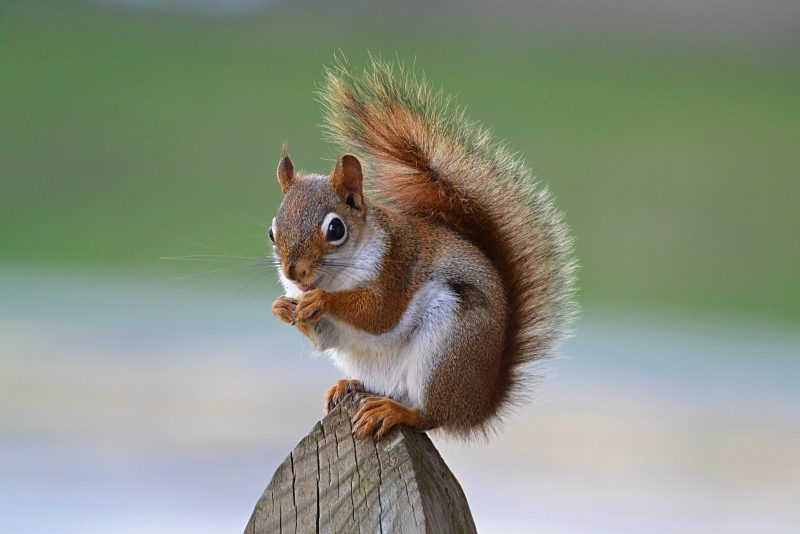
The American Red Squirrel is a small but feisty tree squirrel with a body length of around 12 to 15 inches, including its tail. It is easily recognized by its reddish or rusty upper body, white underbelly, and bold white eye rings. Red Squirrels have a more compact and streamlined appearance compared to their gray and fox squirrel cousins, and their smaller size often makes them more elusive.
This species is known for its energetic and territorial behavior. Red Squirrels are fiercely defensive of their food caches and will produce loud, repetitive vocalizations to warn off intruders. Unlike Gray and Fox Squirrels that scatter hoard, Red Squirrels create centralized food stores known as “middens” where they pile cones, seeds, and nuts in a single location, often near their nest or den. They are also known to chew through maple bark to access sap.
Red Squirrels primarily feed on conifer seeds, especially from pine cones, but they also consume mushrooms, berries, flowers, and occasionally bird eggs or nestlings. Their preference for conifer seeds makes them more common in Iowa’s northern forests and places with planted evergreens. They are quick and nimble, darting across branches and leaping with ease from tree to tree.
In Iowa, American Red Squirrels are more restricted in distribution compared to Gray and Fox Squirrels. They are most commonly found in the northeastern part of the state, especially where spruce, fir, or pine trees are present, such as in parks, cemeteries, or urban plantings. A fun fact is that their middens can last for years and even be inherited by future generations of red squirrels, making them one of the few mammals that “pass down” food stores.
Southern Flying Squirrel (Glaucomys volans)
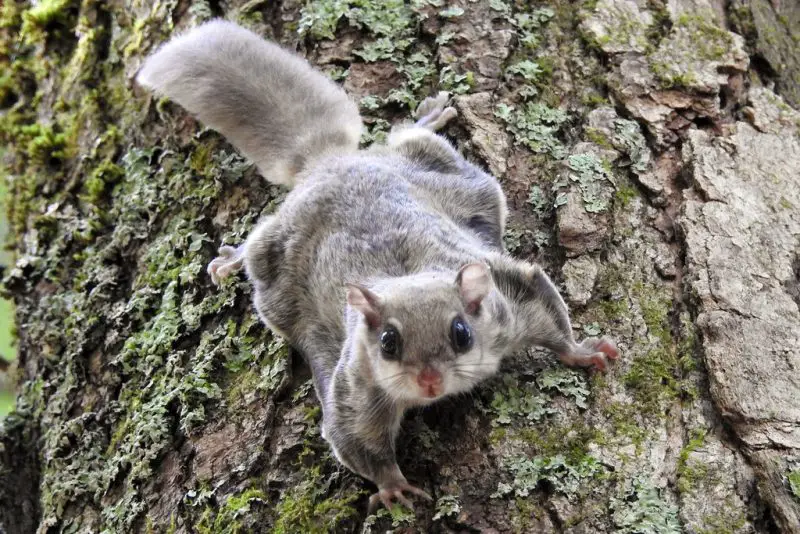
The Southern Flying Squirrel is Iowa’s only native gliding mammal, though it is rarely seen due to its nocturnal habits. These small squirrels measure only 8 to 10 inches in length, including their flattened tails, and weigh just 2 to 3 ounces. They are soft-furred with grayish-brown backs, creamy white bellies, and oversized dark eyes adapted for night vision. The most distinguishing feature is the flap of skin called the “patagium” that stretches from wrist to ankle, allowing them to glide.
Flying squirrels are active mainly at night and use their gliding ability to travel between trees without descending to the ground, helping them evade predators such as owls and foxes. They can glide distances of 50 to 80 feet or more, steering with their tails and limbs. During daylight hours, they nest in tree cavities or abandoned woodpecker holes lined with soft materials like moss, feathers, or shredded bark.
Their diet includes a wide variety of foods, such as acorns, nuts, seeds, berries, insects, tree sap, and even bird eggs. Southern Flying Squirrels are social animals and often form communal nests in winter to conserve warmth. They are very vocal, using high-pitched squeaks and chirps to communicate with one another in the darkness. Because of their small size and nocturnal habits, they often go unnoticed even in areas where they are relatively common.
In Iowa, Southern Flying Squirrels inhabit mature hardwood forests, particularly in the eastern and southeastern regions of the state. They prefer oak, hickory, and beech woodlands where abundant mast crops are available. A fun fact about this species is that they fluoresce under UV light—a recently discovered trait that gives their underbellies a bright pink glow when exposed to ultraviolet light, baffling researchers and delighting wildlife enthusiasts.
Thirteen-lined Ground Squirrel (Ictidomys tridecemlineatus)
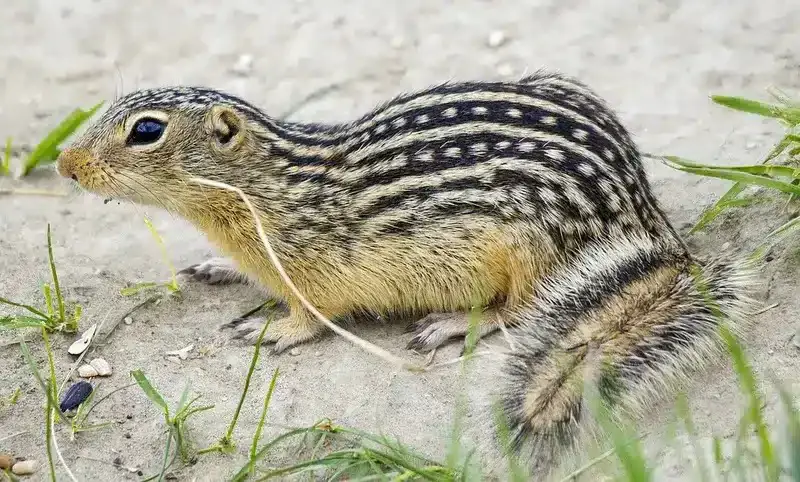
Unlike the tree squirrels above, the Thirteen-lined Ground Squirrel is a terrestrial species that prefers grasslands, prairies, and suburban lawns across Iowa. These small rodents measure about 6 to 12 inches in length, with short tails and streamlined bodies. Their fur features thirteen alternating light and dark stripes running from head to tail, often broken into spots—an excellent camouflage in grassy environments.
Thirteen-lined Ground Squirrels are diurnal and very active during warm weather. They hibernate from October to March, retreating into underground burrows where they lower their body temperature dramatically to survive the winter. Above ground, they stand upright to scan for predators such as hawks and foxes. Their movement is more like that of chipmunks, with fast dashes and abrupt stops while foraging.
Their diet is omnivorous and includes seeds, grasses, insects, caterpillars, and occasionally small vertebrates like baby birds or mice. They are important in the ecosystem as both prey and predators and help control insect populations. Thirteen-lined Ground Squirrels are often seen darting across roadsides, golf courses, athletic fields, and other open, sunny areas with short vegetation.
In Iowa, they are widespread throughout the state, particularly in the central and western prairies. They adapt well to human-altered landscapes, making them one of the most commonly encountered wild mammals in mowed lawns or parks. A fun fact is that this species is a skilled digger—it creates complex underground tunnel systems that may include several exits, food chambers, and hibernation burrows, helping it survive both predators and harsh weather.
FAQ About Squirrels in Iowa
What types of squirrels are found in Iowa?
Iowa is home to five common species of squirrels: the Eastern Gray Squirrel, Fox Squirrel, American Red Squirrel, Southern Flying Squirrel, and Thirteen-lined Ground Squirrel. Each has unique traits and habitat preferences, ranging from urban parks to native prairies and hardwood forests.
Which squirrel species is the most common in Iowa?
The Eastern Gray Squirrel and the Fox Squirrel are the most commonly observed squirrels in Iowa. Gray Squirrels are typically seen in city parks and suburban neighborhoods, while Fox Squirrels prefer open woodlots and rural areas.
Do squirrels in Iowa hibernate during winter?
Most tree squirrels in Iowa, such as Gray and Fox Squirrels, do not hibernate but reduce activity and rely on food caches during winter. However, the Thirteen-lined Ground Squirrel does hibernate by entering a deep torpor in underground burrows from fall to early spring.
Are flying squirrels really found in Iowa?
Yes, the Southern Flying Squirrel is native to Iowa, though it is rarely seen due to its small size and nocturnal lifestyle. They inhabit mature forests, especially in eastern Iowa, and are known for their gliding ability between trees.
Where can I see squirrels in Iowa?
Squirrels are widespread across Iowa. Urban parks, wooded backyards, forest preserves, and prairie edges are all great places to observe different squirrel species. Fox and Gray Squirrels are especially common around residential areas and state parks.
What do Iowa squirrels eat?
Squirrels in Iowa primarily feed on nuts like acorns, hickory nuts, and walnuts. They also eat seeds, berries, mushrooms, tree buds, and occasionally insects or bird eggs. Some species, like the Red Squirrel, also collect and store conifer cones.
Why are some squirrels in Iowa black or white?
These color variations are caused by genetic mutations. Black squirrels are melanistic forms of Gray or Fox Squirrels and are common in some Iowa cities. White squirrels, which may be albino or leucistic, are much rarer but have been reported in places like Ames and Iowa City.
Is it legal to hunt squirrels in Iowa?
Yes, Iowa has a regulated squirrel hunting season from late August through January. The daily bag limit is 6 squirrels (Gray and Fox combined), with a possession limit of 12. No blaze orange is required, but hunting is limited to daylight hours.
Do squirrels damage property in Iowa?
Yes, squirrels can occasionally become a nuisance by nesting in attics, chewing wires, or raiding bird feeders. It’s important to seal entry points and use squirrel-proof feeders if they become a persistent problem around your home.
Are squirrels beneficial to Iowa’s ecosystems?
Absolutely. Squirrels play a key role in forest regeneration by burying nuts and seeds that may later sprout into trees. Their presence also supports local predators like hawks and owls, helping maintain a balanced food web.

